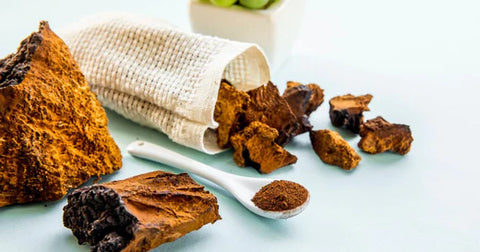The Chaga mushroom, a star in the natural supplements world, often raises questions about its oxalate content. This comprehensive guide is designed to provide a clear, convincing narrative on this topic, backed by research and practical insights.

Unpacking the Study and Its Implications
A specific study is often cited in Chaga discussions involves a case where a woman consumed about 10 grams of Chaga daily, far exceeding typical recommendations. Notably, the study leaves out whether this Chaga was raw or an extract. More importantly, this is a solitary case in scientific literature, making it an exception rather than a rule.
The Takeaway: While this study is frequently mentioned, it's crucial to view it in context. Its unique circumstances shouldn't be a standard measure for everyday Chaga use.
Understanding Oxalate Levels in Chaga
Research on Chaga's oxalate content shows a range between 2% and 10%. Our testing indicates that our Chaga products lean towards the lower end of this spectrum, with an oxalate content of about 2-3%. This equates to roughly 20-30mg per serving.
The Perspective: When compared to many everyday foods, Chaga's oxalate level is relatively modest. For instance, a regular bowl of cereal or a serving of spinach often contains higher levels of oxalates.
Chaga in a Low-Oxalate Diet
If you're on a low-oxalate diet, incorporating Chaga requires careful consideration. Consulting with a healthcare provider is essential to understand how Chaga fits into your specific dietary needs.
The Insight: Chaga has a myriad of health benefits, but its inclusion in your diet should be balanced with an understanding of its oxalate content. This is especially important for those with specific dietary restrictions or health conditions.
Embracing Chaga with Confidence and Knowledge
In conclusion, while Chaga does contain oxalates, its levels are generally lower than many common foods. Armed with this knowledge, and after consulting with a healthcare provider, you can confidently include Chaga in your wellness routine, reaping its benefits while being mindful of its oxalate content.
To read a comprehensive guide on all things Chaga please follow this link.
FAQs Snapshot
Q1: What is the range of oxalate content typically found in Chaga mushrooms?
Research indicates that the oxalate content in Chaga mushrooms can vary, typically ranging between 2% to 10%.
Q2: How does the oxalate content in Chaga compare to other common foods?
Surprisingly, many everyday foods contain higher levels of oxalates than Chaga. For example, a standard serving of cereal or spinach often has a greater oxalate content than a serving of Chaga.
Q3: Is it safe to include Chaga in a low-oxalate diet?
If you're following a low-oxalate diet, it's important to consult with a healthcare provider before adding Chaga to your diet. While Chaga has numerous health benefits, its inclusion should align with your specific dietary needs and health conditions.

